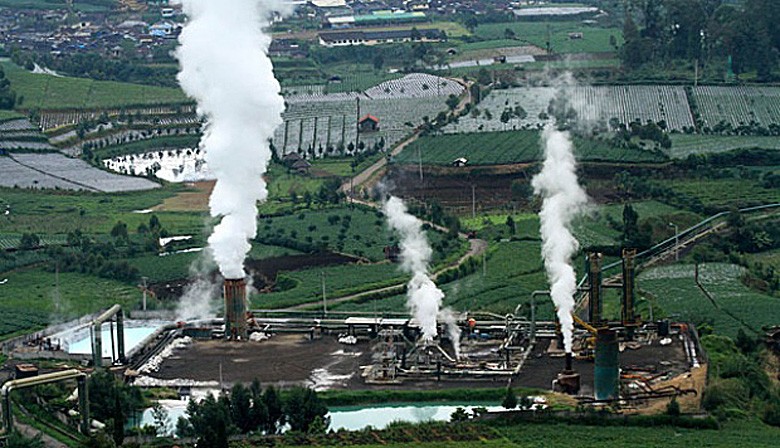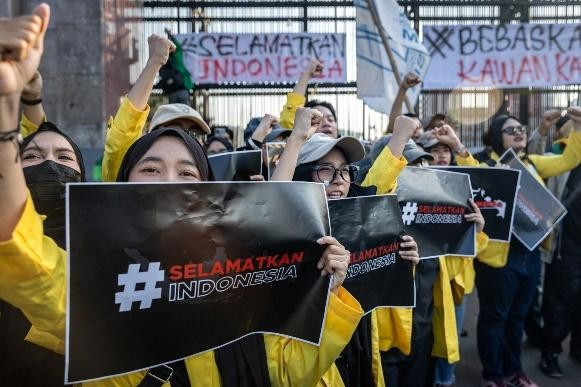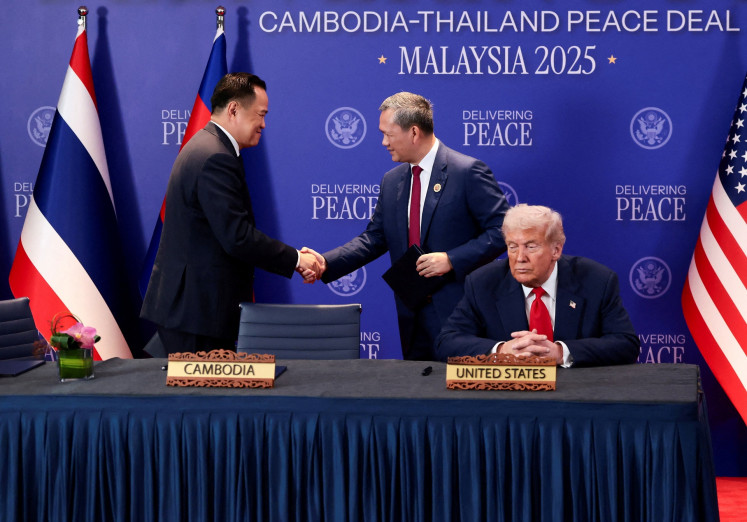Popular Reads
Top Results
Can't find what you're looking for?
View all search resultsPopular Reads
Top Results
Can't find what you're looking for?
View all search resultsIndonesia's untapped geothermal reserves
As an outsider looking in and an insider looking out, it is painful to see the huge potential that Indonesia has being wasted. Targets that are set are not being met for all of the reasons under the sun.
Change text size
Gift Premium Articles
to Anyone
T
he following two titles caught my eye during the past week: “Quest for insurance scheme for RI’s geothermal future” by Pak Riki Ibrahim, president director of PT Geo Dipa Energi, and “More policies needed to boost geothermal use” by Fedina S. Sundaryani of The Jakarta Post.
Pak Riki stated that “Indonesia needs to come up with fiscal incentives and that well-drilling exploration and development represent the largest risk for geothermal development” and “no financial institutions in Indonesia offer funding for geothermal exploration, where the lack of accurate data on the geothermal potentials has discouraged banks from handing out loans to companies that have won the geothermal tenders in Indonesia”.
If exploration is not carried out there will be no accurate data and something has to give.
Fedina’s article stated that the Energy and Mineral Resources Ministry’s geothermal energy director Pak Yunus Saefulhak said, “that it was the government who ideally conducted the thorough exploration in the fields, before putting them up for tender, but due to a lack of funds, the government could only rely on geological, geophysical and geochemical tests to estimate the geothermal reserves”.
It was also stated that “we all know that it costs around US$10 million for drilling one exploration well [and] the government just does not have enough funds to drill the 330 potential reserves,”(which would require approximately $10 billion).
Both articles are telling the same story, one that we have heard several times since two years ago when the government set an ambitious goal to increase the national geothermal capacity to 7,155 megawatts (MW) by 2025, which would make Indonesia the largest geothermal energy producer in the world.
What we are now seeing is articles that are more or less saying why this target will not be met — not directly, but indirectly.
Both articles are clearly stating that exploration needs to be done in order to have reliable data to entice investors. We hear that the funds are not available for this. Of course they are not if three drill holes are allowed for each working area at a cost of $30 million, which by the way is extremely expensive compared to many parts of the world.
Even if we take into account the location and terrain, there are cheaper reliable drilling methods and there are cheaper reliable methods for exploration.
A well-positioned geologist made the following statement to me in the past few days: “The energy policy in this country needs to be holistically managed, not partially as is the current practice.”
As an outsider looking in and an insider looking out, it is painful to see the huge potential that Indonesia has being wasted. Targets that are set are not being met for all of the reasons under the sun.
Local banks and investors could easily invest in the geothermal development of their own country if the risk of exploration is decreased by using different technologies that would decrease the risk of drilling in the least prospective location and by using drilling methods that will confirm the full potential of the geothermal location and decrease the cost of drilling by approximately four times or even more.
Exploring a surface manifestation only, or an area of 10 square kilometers, is uneconomical. Larger areas need to be explored, which may help to decide if the potential of the area has sufficient resources to make it economical for development.
The following two quotes sum up what is not happening in Indonesia for geothermal development and indeed, its natural resources:
“With the technology at our disposal, the possibilities are unbounded. All we need to do is make sure we use it,” wrote Stephen Hawking. “One of the greatest pains to human nature is the pain of a new idea,” wrote Walter Bagehot.
Another quote (this time from the New Testament) sums up these two quotes: “You are bringing some strange ideas to our ears and we would like to know what they mean.” Pokémon GO receives a better reception than technology for exploration.
It staggers belief that a geothermal working area will have three holes drilled based on basic exploration data. If nothing positive is found, the potential will be downgraded to being a non-potential, based on what? Three drill holes drilled at great expense in the least prospective fractured location?
Fedina’s article also stated that the National Energy Board (DEN) was working with the ministry to prepare a regulation on the assignment of preliminary surveys and exploration for the geothermal sector that will allow the government to hire geothermal consulting firms through a limited tendering to gather more accurate data on the fields.
Is this the way to go? The old idiom of “Pay peanuts, get monkeys” is appropriate in a way, since the less you pay, the less reliable data you will collect. Who will get the blame when the drilling does not come up to expectations?
Likewise, who wants to enter a tender for a so-called prospective location without reliable data? The answer should be no one. Therefore, the government has to finance the exploration of geothermal locations with the help of the existing Geothermal Fund Facility (GFF), which was established in 2011 by the Finance Ministry to help accelerate geothermal energy development. Five years on, it has not been utilized fully, if at all.
Traditional methods of exploration have their role, but as stated the government does not have the funds. Therefore technology that does exist needs to be used, technology that allows the focus to be in high-potential areas that will avoid disruption and capital loss in lowpotential areas.
Technology does reduce the risk for drilling, the cost and time of exploration. To put it very simply: “With the technology at our disposal, the possibilities are unbounded.” I.e., the whole of the ring of fire could be explored with the expected cost being far lower than the $31 million it currently costs to explore and drill in one geothermal working area.
With more than 150 volcanoes, of which 127 are active, Indonesia has an abundance of geothermal reserves waiting to be tapped.
---------------
We are looking for information, opinions, and in-depth analysis from experts or scholars in a variety of fields. We choose articles based on facts or opinions about general news, as well as quality analysis and commentary about Indonesia or international events. Send your piece to community@jakpost.com. For more information click here.










